Fish ulcer is common disease that can significantly impact a fish’s health and well-being. Ulcers can appear in many forms, ranging from small boils to large lesions.
This serious health issue has been known to cause significant damage to the skin, fins, and gills of affected fish. Early diagnosis is important for preserving the health of your aquatic animals.
In this article, we will examine the causes, diagnosis and potential treatments for fish ulcer disease in order to help you protect your finned friends from this potentially devastating illness.
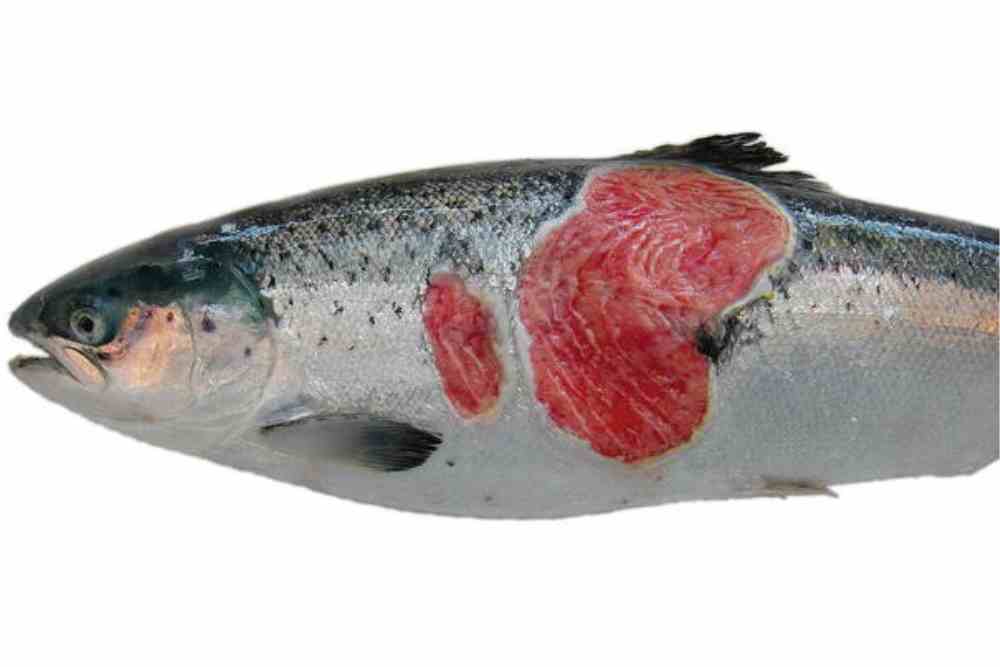
What if Fish Ulcer?
Fish ulcer is a common disease that affects both saltwater and freshwater fish.
It is characterized by the formation of sores or lesions on the skin of the fish, which may be caused by bacterial or fungal infections, parasites, poor water quality, or injuries.
It is important to take prompt action to prevent the spread of fish ulcer in aquariums or fish farms, as it can be highly contagious and cause significant damage to fish populations.
What Causes Fish Ulcer?
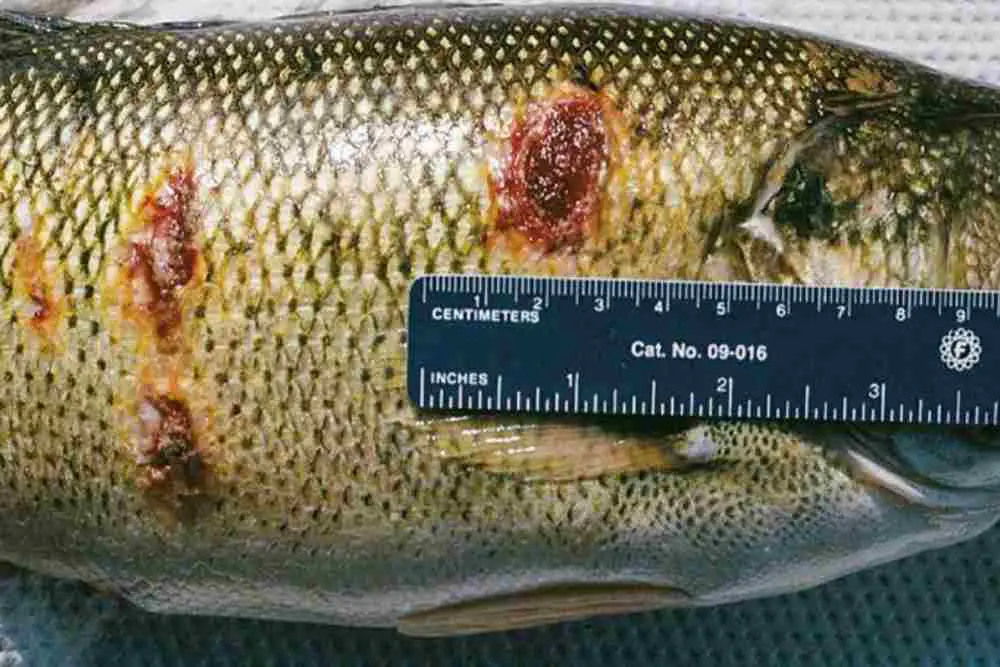
It’s important to identify the underlying cause of ulceration in fish and take appropriate measures to prevent the spread of the disease and promote the fish’s healing.
Fungal infection: There are several factors that can cause ulceration in fish. One of the most common causes is bacterial or fungal infections, which can develop due to poor water quality, overcrowding, or injuries to the fish’s skin.
Parasite: Parasites can also cause ulceration in fish, as they can damage the skin and create openings for secondary infections to develop.
Environmental stressor: When aquatic ecosystems are polluted or disrupted, one of the common signs is skin ulcer on fish.
Exposure to certain environmental stressors, such as extreme temperature or pH, can also weaken the fish’s immune system and make them more vulnerable to infections and ulceration.
Laboratory tissue mounting suggests that skin damage can also occur indirectly through exposure to environmental stressors.
Exposure to biotoxin: Exposure to xenobiotic compounds or biotoxins, either through natural events or human activities like pollution, can lead to skin ulcers in fish.
Study found various harmful compounds and biotoxins have been linked to skin ulcer epidemics in fish, either through experiments or real-life situations.
Some of these compounds, like those produced by the dinoflagellate alga Pfiesteria, are causing significant concerns for the health of aquatic ecosystems, including estuaries on the US east coast.
What Do Ulcers Look Like on Fish?
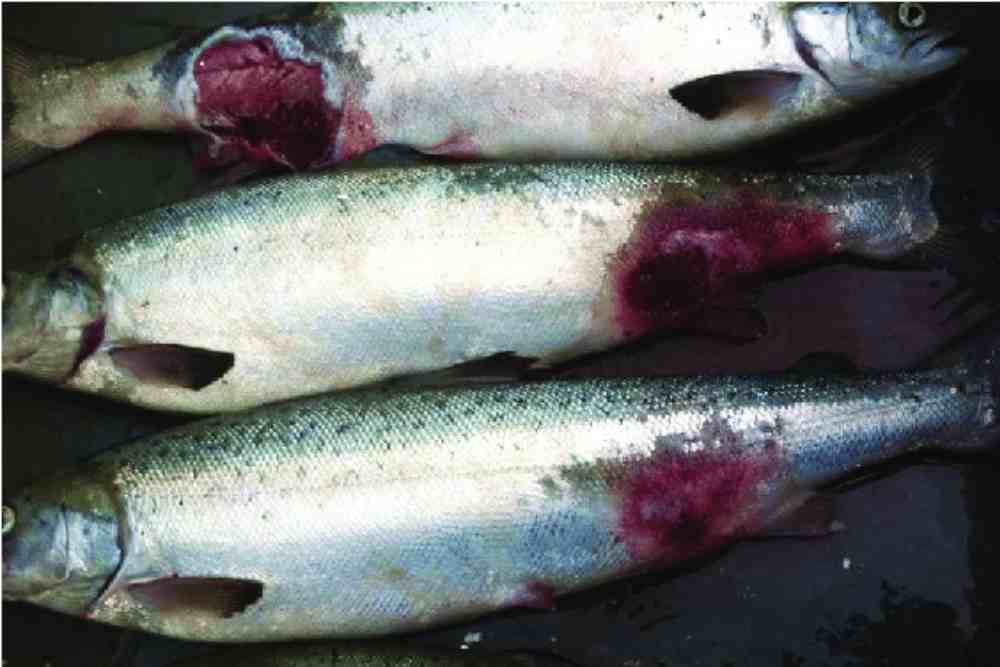
Fish ulcers can have a variety of appearances, but they typically appear as open sores or lesions on the skin or fins of the fish.
The ulcers may be round or irregularly shaped and can range in size from small to very large.
They may appear red, pink, white, or gray and may be surrounded by inflammation or redness in the surrounding tissue.
In some cases, the ulcers may be covered by a layer of white or gray material, which can indicate a secondary bacterial or fungal infection.
Sign & Symptoms of Fish Ulcer
Fish ulcer is a disease that can manifest in various ways, and some of the signs and symptoms to look out for include:
Skin lesions or sores: The most common sign of fish ulcer is the presence of skin lesions or sores on the fish’s body, often surrounded by redness or inflammation.
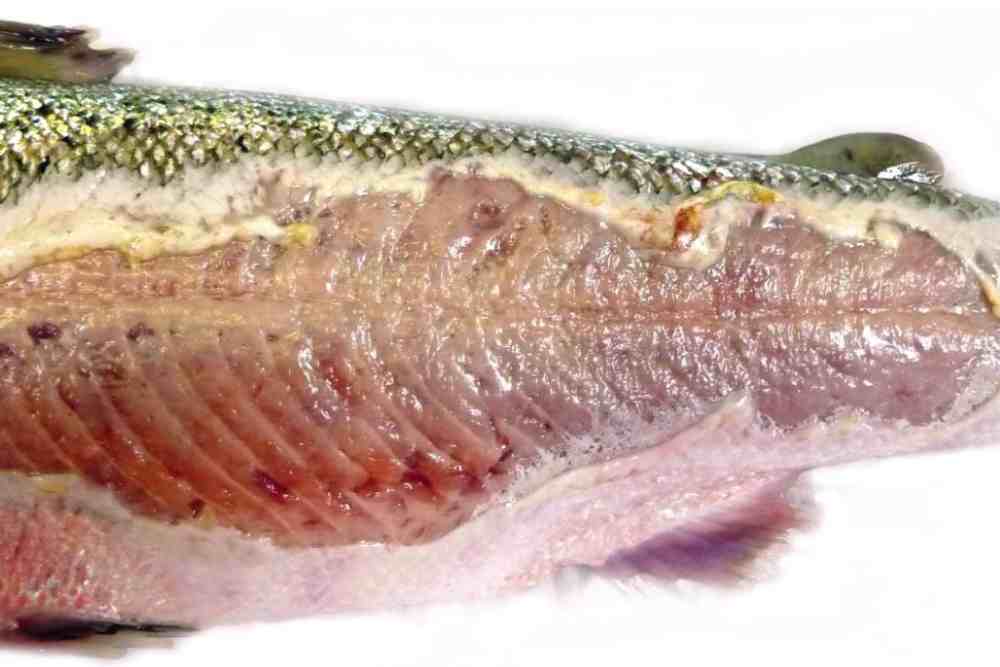
Loss of scales: Fish ulcer can also cause the loss of scales in affected areas, leaving the skin exposed and vulnerable.
Lethargy: Infected fish may become less active and appear lethargic, with reduced swimming and feeding behaviors.
Loss of appetite: Fish with ulcers may also lose their appetite, leading to reduced growth and potential weight loss.
Abnormal swimming: Fish with ulcers may exhibit abnormal swimming behavior, such as swimming in circles or staying close to the surface.
Fin rot: In some cases, fish ulcer can lead to fin rot, which is the gradual deterioration of the fins.
Diagnosis of Fish Ulcer
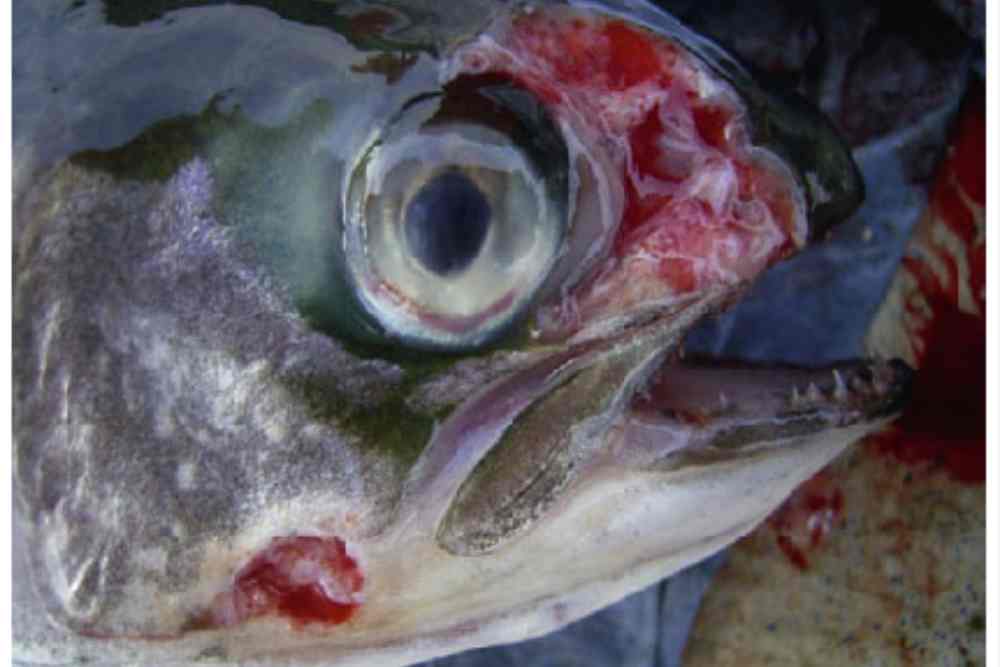
Diagnosing fish ulcer and identifying its underlying cause involves a combination of physical examination, laboratory testing, and analysis of environmental factors.
Some of the methods used to diagnose fish ulcer and its causing agents and factors include:
Physical examination: A veterinarian or fish health expert can visually inspect the fish for signs of skin lesions, loss of scales, and other symptoms of fish ulcer.
Microscopic examination: A sample of the affected tissue can be collected and examined under a microscope to look for evidence of bacterial or fungal infection or the presence of parasites.
Bacterial or fungal cultures: Samples can be taken from the affected area and cultured in a laboratory to identify the specific bacteria or fungi causing the infection.
Water quality analysis: Testing the water quality, including pH, temperature, and oxygen levels, can help identify any environmental stressors that may be contributing to fish ulcer.
Exposure history: A history of the fish’s exposure to potential harmful agents, such as pollutants or biotoxins, can help identify the underlying cause of fish ulcer.
How to Prevent Ulceration in Fish
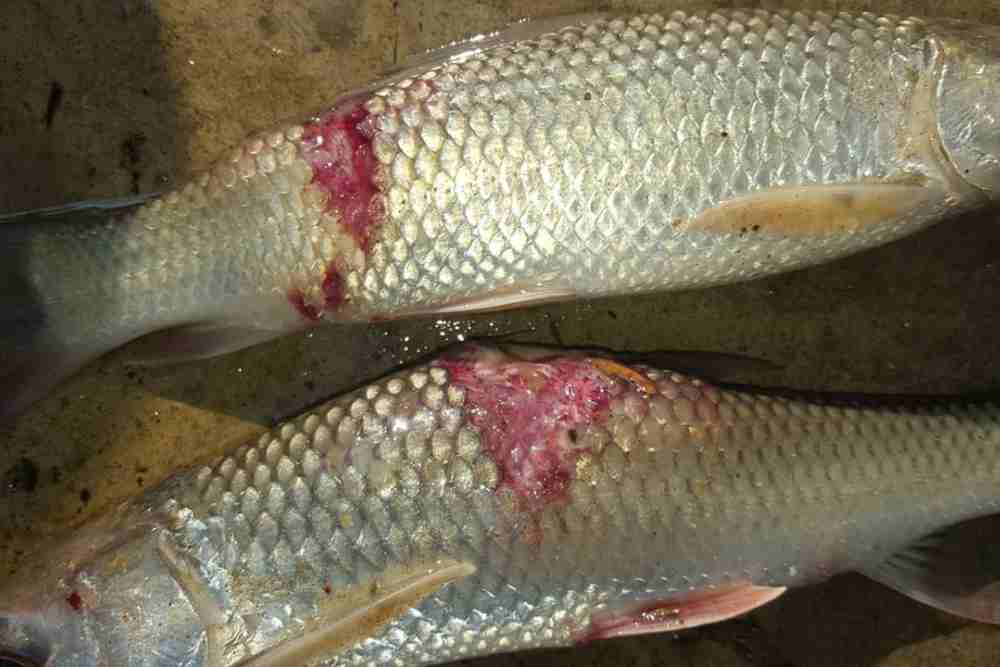
Preventative steps can also be taken to reduce the risk of fish ulcer, such as maintaining good water quality, avoiding over-crowding, and reducing the risk of exposure to harmful agents.
In addition to treating the underlying cause of the ulcer, it is important to keep the tank clean and maintain good water quality.
This can help prevent the development of secondary infections and promote healing of the affected tissue.
Providing a healthy diet and ensuring that the fish are not overcrowded or stressed can also help prevent the development of ulcers in tropical fish.
How To Treat A Fish Ulcer? (Fish Ulcer Treatment)
These treatment options can be used alone or in combination, depending on the specific conditions and needs of the fish and the farming environment.
Here are some common methods used to treat fish ulcer:
Antibiotics or antifungal medication: If the ulcer is caused by bacterial or fungal infection, medications can be used to treat the underlying infection.
Parasite treatment: If the fish ulcer is caused by parasites, specific treatments can be used to remove or control the parasites.
Environmental management: Maintaining good water quality and addressing any environmental stressors, such as pH or temperature extremes, can help reduce the risk of fish ulcer and promote healing in affected fish.
Vaccines: Immunizing the fish against the specific bacteria causing the ulcer can help prevent future infections.
Functional feeds: Feeding the fish with specially formulated feeds that contain natural or synthetic compounds to boost their immune system and reduce the risk of infection.
Repellents: Using chemical or physical repellents to keep bacteria and other harmful agents away from the fish.
Physical barriers: Creating physical barriers, such as nets or screens, to prevent bacteria from entering the fish environment.
Environmental treatments: Treating the water with chemicals or other agents to reduce the growth and spread of bacteria.
System modification: Modifying the fish farming system, such as changing the water flow or filtration system, to reduce the risk of infection.
Immersion and in-feed treatments: Using antibiotics or other medications to treat the fish, either through immersion or through adding the medication to their feed.
Benchmarking commercial treatments: Using best practices and treatments developed by commercial fish farms to improve the health of the fish.
Genetic selection/phenotyping: Selecting and breeding fish that are more resistant to infections or have a better immune system to reduce the risk of infection.
Pond Fish Ulcer & Treatment
Several types of pond fish can be affected by skin ulcers, including:
Common carp: Common carp are prone to developing ulcers, which can be caused by bacterial infections, parasites, or environmental stressors.
Catfish: Certain species of catfish, such as channel catfish, may develop ulcers due to bacterial infections or parasitic infestations.
Trout: Rainbow trout and other types of trout can develop ulcers as a result of bacterial infections or parasitic infestations.
Tilapia: Tilapia are also susceptible to developing ulcers, which can be caused by bacterial infections or poor water quality.
Bass: Certain species of bass, such as largemouth and smallmouth bass, may develop ulcers due to bacterial infections or parasitic infestations.
Tropical Fish Ulcer
Tropical fish, like other types of fish, can develop skin ulcers for a variety of reasons, including bacterial infections, parasitic infestations, and environmental stressors.
Some of the most common tropical fish species that may develop ulcers include angelfish, discus, and cichlids.
Ulcer in Aquarium Fishes & Their Treatment
There are several aquarium fish species that have been observed with ulceration on their body skin. Some common examples include:
Goldfish ulcer: Goldfish are prone to developing ulcers, which can be caused by bacterial infections, poor water quality, or physical injury.
Betta fish ulcer: Betta fish may develop ulcers as a result of bacterial or fungal infections, or due to stress and poor water conditions.
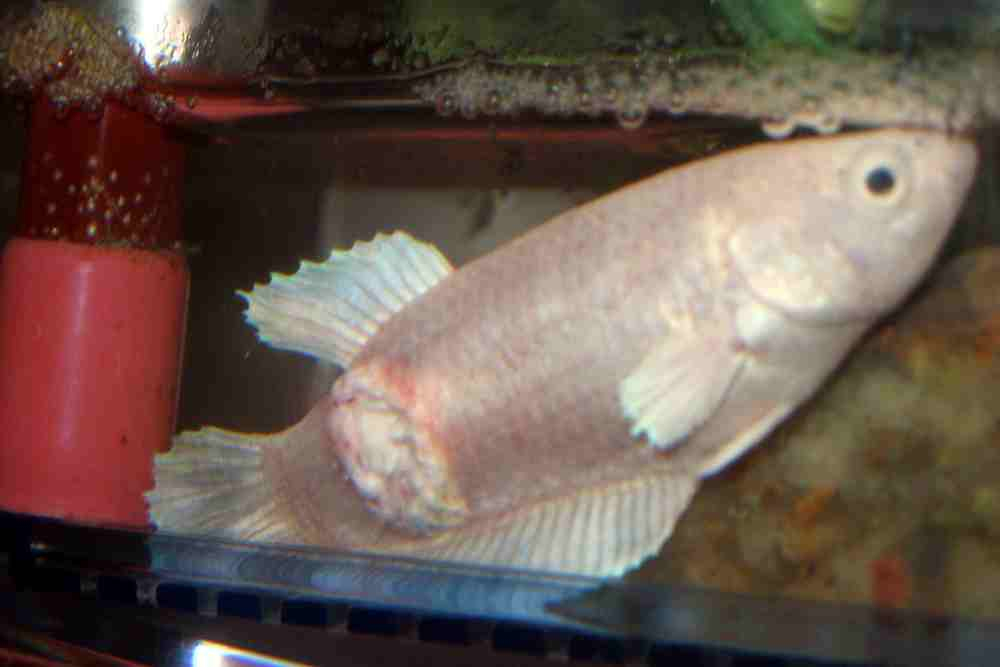
Koi fish ulcer: Koi fish are also susceptible to developing ulcers, which can be caused by a variety of factors such as poor water quality, parasites, or bacterial infections.
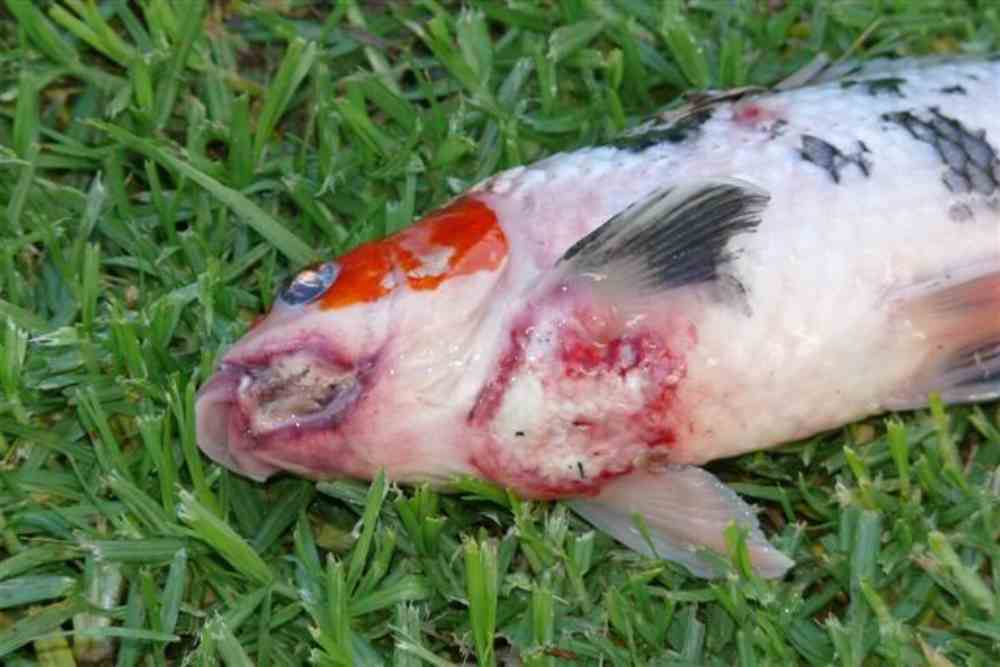
Cichlids: Certain species of cichlids, such as angelfish and discus, may develop ulcers due to bacterial infections or parasitic infestations.
Gouramis: Gourami fish are known to develop ulcers, which can be caused by bacterial infections, parasitic infestations, or physical injury.
In general, Goldfish, betta fish & koi fish ulcers are a common problem in fish keeping, and can be caused by a variety of factors, such as poor water quality, trauma, and bacterial or fungal infections.
The symptoms of a goldfish ulcer may include a round, open sore on the skin or fins, surrounded by redness or inflammation. The ulcer may also be covered by a white or gray film, indicating a secondary infection.
To treat a goldfish, betta fish or koi fish ulcer, it is important to first identify and address the underlying cause of the problem. This may involve improving water quality, addressing any trauma to the fish, and administering appropriate medication to treat any bacterial or fungal infections.
One effective treatment for goldfish, betta fish and koi fish ulcers is the use of topical medications, such as antimicrobial or antifungal creams or ointments.
These medications can be applied directly to the affected area, and may be effective in treating both the primary ulcer and any secondary infections.
In addition to topical medications, it may also be necessary to administer oral antibiotics or antifungal medications to treat the underlying infection.
It is important to work with a veterinarian or fish health expert to identify the appropriate treatment plan for your goldfish, betta fish and koi fish and monitor their progress closely.
FAQs
Can fish ulcers heal on their own?
In some cases, fish ulcers may be able to heal on their own if the underlying cause of the disease is addressed and any environmental stressors are minimized.
However, this is not always the case and treatment may be necessary to promote healing and prevent further damage or infection.
It’s important to identify and address the underlying cause of the ulcer and provide appropriate treatment.
Is fish ulcer contagious?
Fish ulcers can be contagious, depending on the underlying cause of the ulcer.
For example, some bacterial or viral infections that cause ulcers can be spread from fish to fish through contact with contaminated water or infected fish.
What is skin ulcer in fish?
A skin ulcer in fish is a lesion or open sore that appears on the skin or fins of a fish. It is typically caused by bacterial or parasitic infections, although environmental stressors such as poor water quality or extreme temperatures may also contribute to the development of ulcers.
Skin ulcers can be painful for fish and may compromise their immune system, making them more susceptible to other infections. Proper diagnosis and treatment of fish ulcers is important to ensure the health and well-being of the affected fish.
What is fish mouth ulcer?
Fish mouth ulcer, also known as “fish ulcer disease” or “mouth rot”, is a condition that affects fish, particularly in aquariums or fish farms.
It is a bacterial infection that causes lesions or sores to form in the mouth, gums, and lips of fish, leading to difficulty in eating, breathing, and even swimming.
The disease is caused by various bacteria, including Aeromonas and Pseudomonas, which thrive in poor water quality, overcrowding, or other stressful conditions.
References
- Noga E. J. (2000). Skin ulcers in fish: Pfiesteria and other etiologies. Toxicologic pathology, 28(6), 807–823.
- Ahmad I., (2022). Chapter 16 – Ulceration in fish: causes, diagnosis and prevention, Bacterial Fish Diseases, Academic Press, 337-350.
- Law, M. (2001). Differential diagnosis of ulcerative lesions in fish. Environmental Health Perspectives, 109(suppl 5), 681-686.
- Pal, J., & Pradhan, K. (1990). Bacterial involvement in ulcerative condition of air‐breathing fish from India. Journal of fish Biology, 36(6), 833-839.
- Das, M. K., & Das, R. K. (1993). A review of the fish disease epizootic ulcerative syndrome in India. Environment and ecology. Kalyani, 11(1), 134-145.
- Vogelbein, W. K., Shields, J. D., Haas, L. W., Reece, K. S., & Zwerner, D. E. (2001). Skin ulcers in estuarine fishes: a comparative pathological evaluation of wild and laboratory-exposed fish. Environmental Health Perspectives, 109(suppl 5), 687-693.
- Tunsjo, H. S., Paulsen, S. M., Berg, K., Sorum, H., & L’Abee-Lund, T. M. (2009). The winter ulcer bacterium Moritella viscosa demonstrates adhesion and cytotoxicity in a fish cell model. Microbial pathogenesis, 47(3), 134-142.
- Fish, F. F. (1934). Ulcer disease of trout. Transactions of the American Fisheries Society, 64(1), 252-258.
- Frerichs, G. N., Millar, S. D., & Roberts, R. J. (1986). Ulcerative rhabdovirus in fish in South-East Asia. Nature, UK, 322(6076).
- Fraser, G. C., Callinan, R. B., & Calder, L. M. (1992). Aphanomyces species associated with red spot disease: an ulcerative disease of estuarine fish from eastern Australia. Journal of Fish Diseases, 15(2), 173-181.
- Torud, B., & Hastein, T. (2008). Skin lesions in fish: causes and solutions. Acta Veterinaria Scandinavica, 50(1), 1-3.